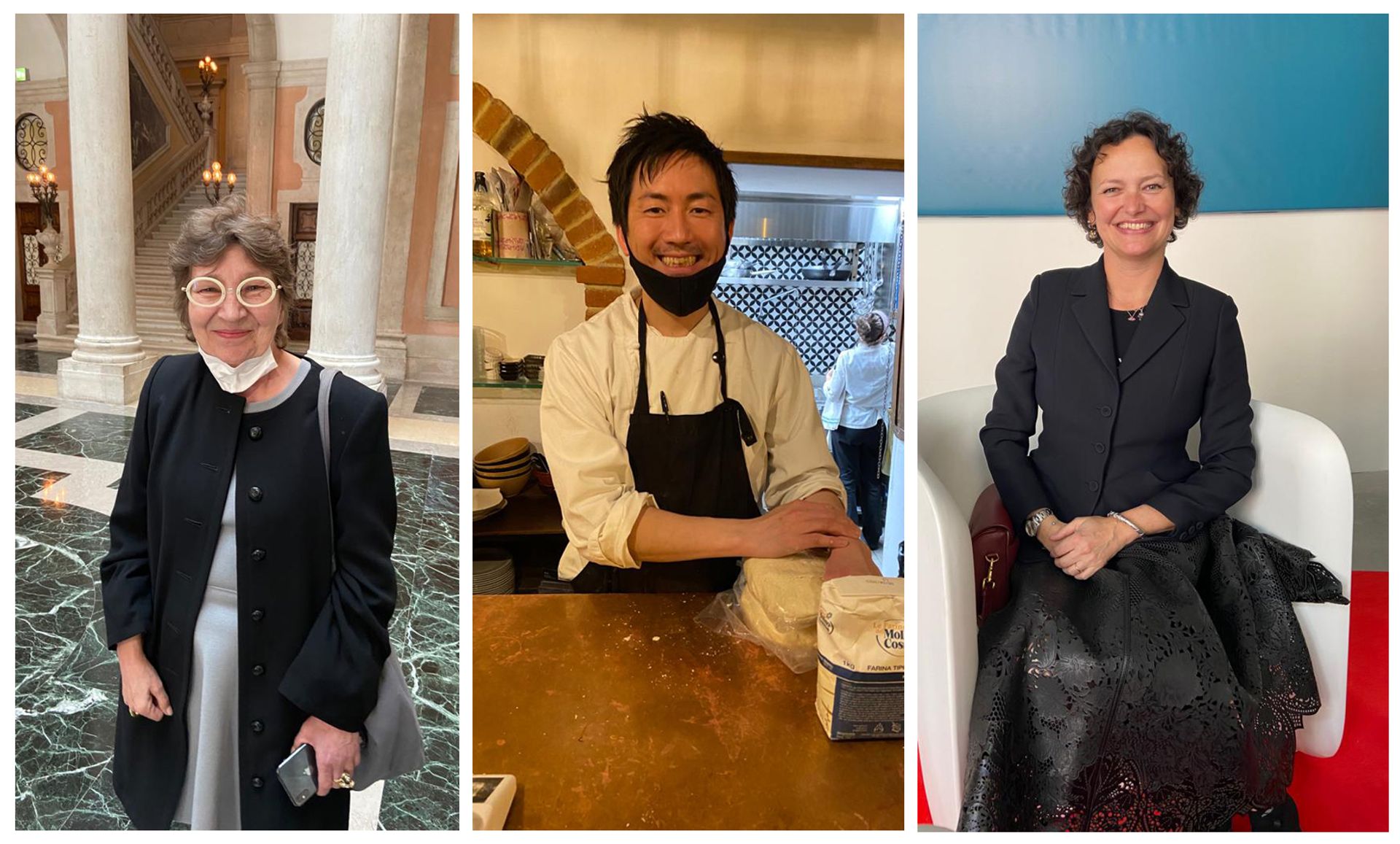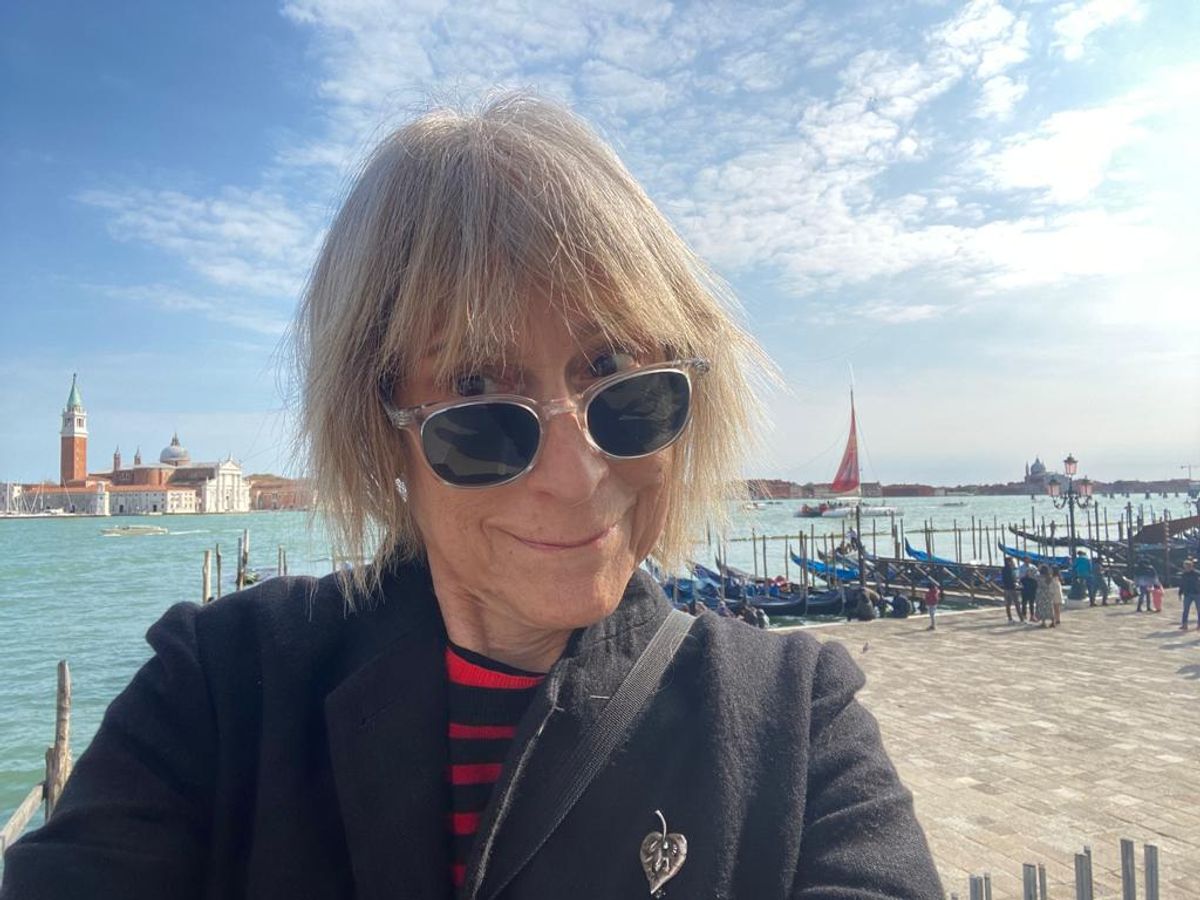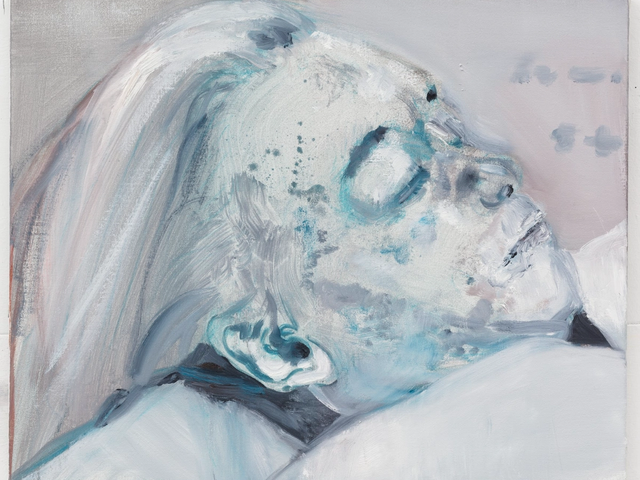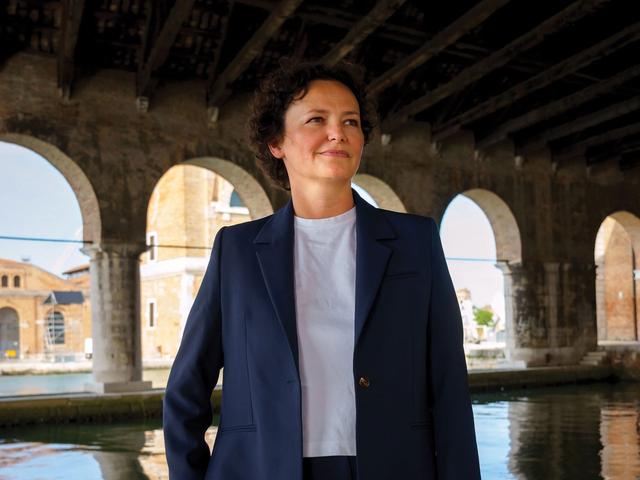It was very odd, and rather fascinating, to arrive in the city identified with Titian, Giorgione and Tintoretto and be whisked to dinner in the only Japanese restaurant known to the Veneto. The writer and independent curator Tommaso Speretta, a native, suggested it. The epicurean architect Kulapat Yantrasast, a current favourite of the US museum world (particularly the Metropolitan Museum of Art), found the idea irresistible. So did I, even though it meant giving up a dinner that Lisson Gallery was hosting for Stanley Whitney.

The Venice Biennale 2022: an art world reunion. From left: Klaus Biesenbach, artist Maurizio Cattelan, and the Ukrainian pavilion architects Iryna Miroshynykova and Oleksiy Petrov with the curator Maria Lanko Photos: Linda Yablonsky
With his wife, the artist Marina Adams, and their son, the New York-based Whitney has for many years summered in a village near Italy’s prosciutto capital, Parma. It is the source of the eye-melting colour in his Italian Paintings (23 April-27 November), the exhibition lighting up the beautifully decayed, first-floor rooms of the Palazzo Tiepolo Passi, a private home on the Grand Canal. In one room, four paintings from 1992-93 were especially striking. “I've never hung these before,” admitted Whitney, who had removed them from studio storage for the show. “But we like ‘em now!” Do we ever. Among the show's guests, including collector Patrizia Sandretto Re Rebaudengo and Venice Biennale artist Amy Sillman, they were the bomb of Monday evening’s preview.

From left: architect Kulapat Yantrasast and Biennale artist Amy Sillman Photos: Linda Yablonksy
Speaking of bombs, the two-channel, continuously running film portion of 2011 ≠ 1848, an exhibition referencing civil unrest across the world in 2011 by the Canadian pavilion artist Stan Douglas, is in the Magazzini del Sale on the Zattere in Dorsoduro. The section I caught links rappers (two female, one male) from London and Cairo, two of the sites of conflict depicted in Douglas's photographs in the Giardini. Just go see it!
Also not to be missed is Marlene Dumas at the Palazzo Grassi, a reminder of what painting can do that no other medium can touch. “Her work is to take risks with everything,” commented the Pinault Collection curator Caroline Bourgeois, who may have given this career survey of Dumas’ erotic, abject, tender, troubling and mortal portraiture its most beautiful pesentation anywhere.

From left: the Pinault Collection curator Caroline Bourgeois, chef Masa, and Cecilia Alemani the curator of the Venice Biennale 2022 exhibition Milk of Dreams Photos: Linda Yablonksy
These shows comprised the amuse-bouche preceding my Japanese-Venetian dinner. I had to swear not to ruin the exclusivity of the restaurant by revealing its name, but the chef is called Masa. And if you’re curious about the flavours of horsemeat served with a mouth-watering appetiser of Venetian sardines, do go and explore.
There is so much visual delectability on the menu of the visual feast that is this year’s Biennale that one might be forgiven for grazing, but it’s worth going into the Giardini and making a pig of yourself.
There is so much visual delectability on the menu of the visual feast that is this year’s Biennale that one might be forgiven for grazing, but it’s worth going into the Giardini and making a pig of yourself. Personally, I could not get enough of the curator Cecilia Alemani’s beautiful main show The Milk of Dreams (23 April-27 November), the largest, most luxuriantly appointed, multigenerational and female-focussed Biennale of my lifetime.
The show has its critics, of course—this is the art world—and there are weak spots that suffer mainly from how potent the rest of the show is. On the whole it delivered the satisfying fascinations and harmonic uplift that one wants from art especially in a world that, politically, environmentally, sexually and socially, has gone off its rocker.

People-spotting is half the job of an art journalist. From left: the Tate curator Polly Staple with Pace Gallery's curatorial director Mark Beasley and the Performance Space New York curator Patti Hertling; Altman-Siegel Gallery director Becky Koblund and dealer Bridget Donahue; and the Greek collecting family Lietta Jouannou, Dakis Joannou and Maria Joannou Photos: Linda Yablonsky
I had a bit of a time-warp moment on arriving at the Giardini, where I was startled to see the 2013 Biennale artistic director, Massimiliano Gioni, guiding a group from New York's New Museum (where he is director) into Alemani’s show as if it were his. But he was perfect for the docent role: as Alemani’s spouse and his own artistic expertise, he had greater knowledge than anyone other than his wife.
During a day that she spent doing media interviews dressed and shod in Dior, well aware of her success, the first Italian woman to direct Venice's art Biennale seemed to acquire regal status. What did she most look forward to doing at week’s end? Her reply was instant: “Going home and being a mother again!”




